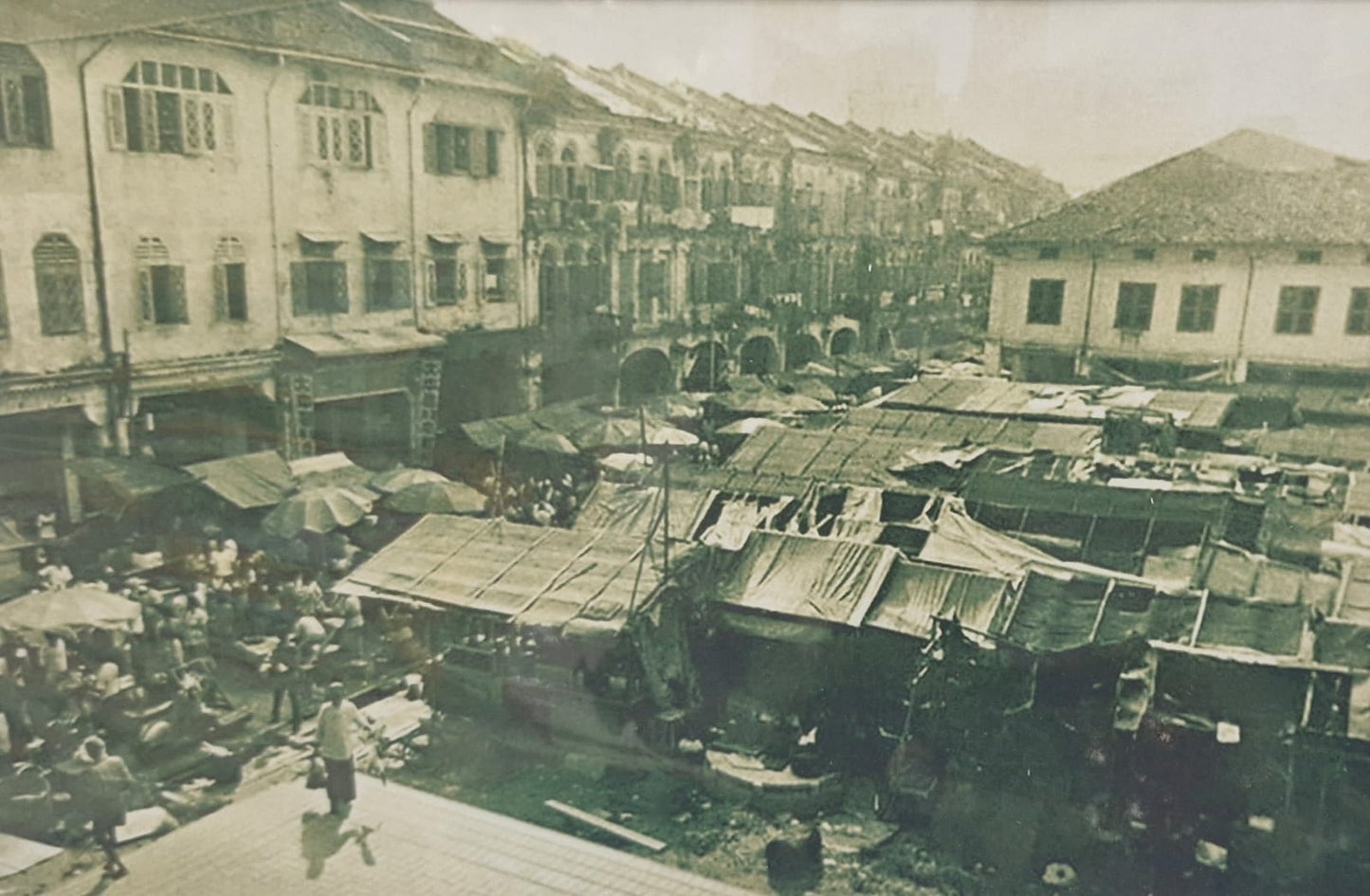Eagle's Eye Art Gallery
The Many Faces of Sago Street
The Many Faces of Sago Street
Couldn't load pickup availability
Photograph Print by Yip Cheong Fun.
This artwork is mounted on mattboard.
Down Memory Lane in Singapore:
Many Faces of Sago Street
This street that seemed to have vanished into oblivion derived its name from the 17 sago factories located here in the past. But they became better known and even notorious in the past for gambling, prostitution and funeral services. Some called this area Fang Chai Mei or the Tail of the Foreigners, an oblique reference to a large number of brothels here catering to foreigners served by hordes of foreign prostitutes under registration by the British colonial government. The registration was discontinued in an awkward manner, followed by the banning of prostitution altogether. This seemed to show a lack of experience on the part of the Colonial government in dealing with this problem involving the oldest trade in the world. The appointment of William Pickering as the Chinese Protector in 1877 was intended to protect Chinese women from becoming prostitutes. Prostitution had proliferated with the mushrooming of brothels, gambling houses and opium dens where the prostitutes operated.
Apart from the myriads of hawker stalls in this area as many Chinese turned to street hawking following the world depression, Sago Lane, next to Sago Street, projected haunting images of dinghy death houses along portions of the road.
People living there had seen harrowing times, seeing many houses being torn down and families relocated with urban renewal and conservation. The tearing down of houses were in stages starting from May 1970, in 1975 and 1983-4 at the South Bridge Road end. The latest attraction: The relic of Buddha`s tooth could be found at the new multi-million temple there, which would be ready sometime in February 2007. Also, watch the old folks there, and visit the Kreta Ayer Square and the Chinatown Complex - the latter now offers the best bargains in Singapore. Visit Sago Lane, now a mall to get antiques and curios and other cultural artefacts during the weekends and on public holidays.
Yip Cheong-Fun, the Master Photographer, had the rare gifts of creating photographs carrying a telling message with images forged by a combination of all the crucial elements involved such as content, composition, light and timing and dramatic intensity. Moved by these rare qualities, the Photographic Society of New York, elected him to be `The Honorary Outstanding Photographer of the Century` (the Century`s seascape specialist.) Yip was also a recipient of the Cultural Medallion conferred by the Government of Singapore in recognition of his outstanding artistic achievements and contributions to photography and culture and for artistic excellence. Yip remained a non-professional photographer throughout his life in Singapore`s Chinatown.
Share


